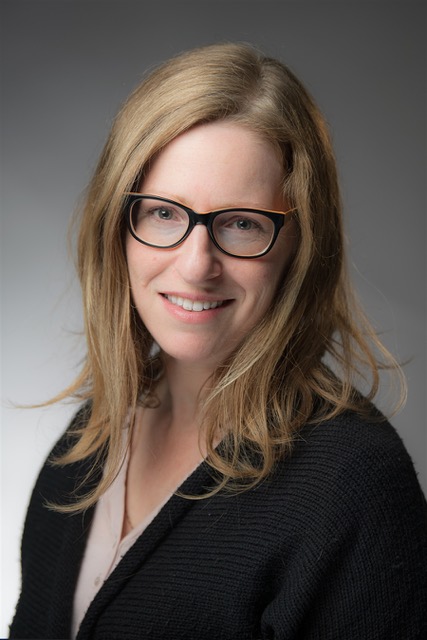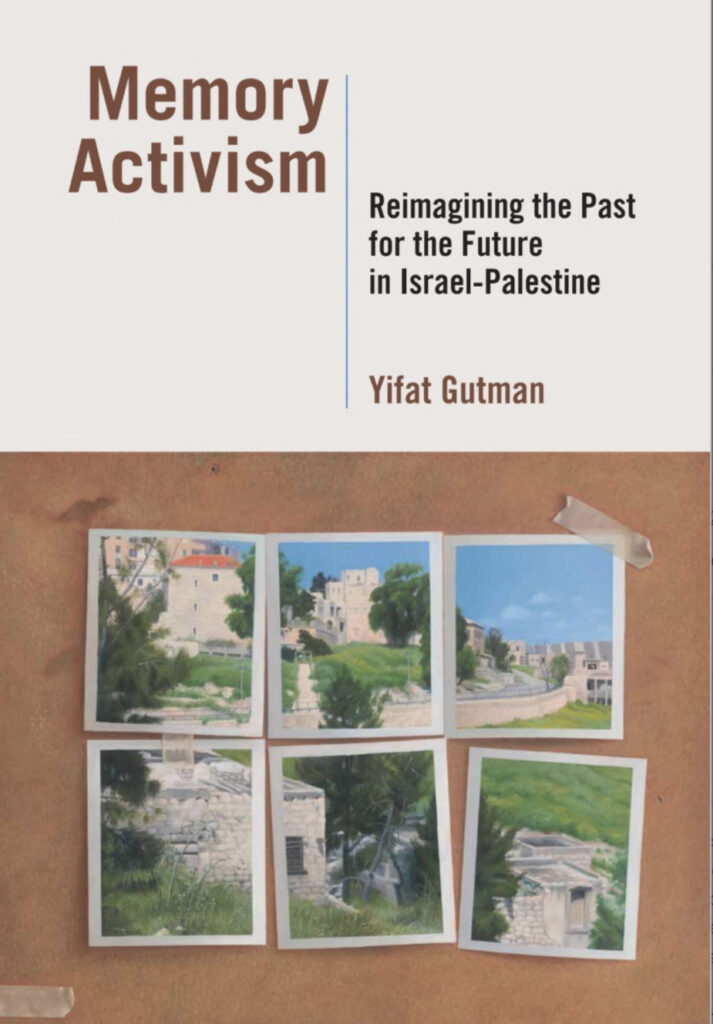Just as Israeli-Palestinian relations reached a new low in the early 2000s, memory activists in Israel embraced a strategy of confronting the past to resolve the crisis in the present. Dr. Yifat Gutman, author of Memory Activism: Reimagining the Past for the Future in Israel-Palestine, discusses how memory activists tackled the taboo subject of 1948. Through tours of ruined and abandoned Palestinian villages and testimonies of their former residents, memory activists tried to promote awareness of the Nakba, or the destruction in Arabic as Palestinians refer to 1948. The hope was that awareness would lead to public recognition and ultimately responsibility for the past.
The Oslo Accords of the mid-1990s was the high water point of optimism about resolving the long-standing Israeli-Palestinian conflict. An historic agreement between Israeli leaders Yizak Rabin and Shimon Peres and Palestinian leader Yasser Arafat, the Oslo Accords put the occupied territories of the West Bank and Gaza Strip on a path to statehood and political independence. The unraveling of the Oslo Accords in the years that followed caused Israelis-Palestinian relations to spiral into new depths of violence and division. The Second Intifada, a Palestinian uprising which erupted in the occupied territories in October 2000, claimed thousands of lives. Israeli authorities responded by building a separation wall between parts of the West Bank and Israel. That same October 2000, protests that turned violent among Palestinian-Israeli citizens in a community in northern Israel ended in over a dozen deaths. By the early 2000s, Israeli-Palestinian relations had reached a new low.
It was within the divisive and conflict riddled context of the early 2000s that memory activism took shape in Israel. Inspired by the Truth and Reconciliation Commision in South Africa and historical justice efforts in other post-conflict countries such as the former Yugoslavia and Northern Ireland, memory activism is based on a three stage process. First, awareness of past wrongs, or knowing, needs to be achieved. This can happen through a variety of means such as truth commissions or testimonies. Second, the assumption was that knowing would lead to public acknowledgement. The Third and final stage is responsibility or acting on this public acknowledgement through concrete efforts to make amends for past injustices. Memory activism was a break with the pragmatic thinking of the Oslo days or the hope that peace could be achieved through territorial and political sovereignty concessions without taking history into account. This was the period of the people to people, or P2P, industry where exchanges and meetings between Israelis and Palestinians were supposed to shatter stereotypes and lead to greater mutual understanding, respect, and recognition. Rather than aiming at mutual recognition, memory activists understood Israeli-Palestinian relations to be asymmetrical and focused first and foremost on promoting awareness among Israelis for responsibility in displacing and disenfranchising the Palestinian population. Above all this meant challenging the dominant narrative of 1948 or the story of the creation of the state of Israel.
In Memory Activism: Reimagining the Past for the Future in Israel-Palestine, Yifat Gutman studies three memory activist initiatives that took shape in the early 2000s. Common to all three projects was the goal of breaking the silence about the Nakba. Both Baladna (our Homeland in Arabic), run by Palestinian-Israelis and Zochrot (we remember in Hebrew) a Jewish-Israeli NGO, use tours of Palestinian villages ruined and left abandoned by the fighting in 1948. Former Palestinian residents of these communities offer testimonials of life before, during, and after 1948. Tours and testimonies, Yifat explains, are core features of Israeli memory culture. Tours were first used in the years after 1948 as a means of helping Jewish settlers from Eastern Europe to develop ties to their new homeland through a strategy that was referred to as “conquering the land with our feet” and remain a regular part of the national school curriculum. Testimonies gained wide currency following the trial of Adolf Eichmann, one of the leading Nazi organizers of the Holocaust. Israel’s Yad Vashem: The World Holocaust and Remembrance Center houses over 100,000 audio, video, and written testimonies. So pervasive and familiar are tours and testimonies that they make it easier for participants in the memory activist tours to accept stories of the Nakba. These tours typically focus on daily life and often include the experience of women—a universalist dimension that also helps their message to resonate.
The shift from future to past in the political arena and the centrality of claims for historical justice have been extremely visible in the region in the second half of the 1990s and in the 2000s. As future visions for the region disappeared in the aftermath of the Oslo Peace Accords and violence and physical separation increased, each side further fortified its position through a discourse of historical rights. The past has become a central and crucial arena for political struggle. Yifat Gutman, Memory Activism: Reimagining the Past for the Future in Israel-Palestine
The third memory activist initiative is Autobiography of City. A joint Jewish and Palestinian Israeli project, Autobiography of a City is based in Jaffa and focuses on memories of Palestinian life in the city prior to 1948. It does so through video recorded testimonies compiled in a digital data base which visitors can use to select and combine stories to create an ever changing narrative of the city’s Palestinian past. The stories can in turn be mapped on to the city as an audio tour of Jaffa’s Palestinian memoryscape. Artists have also used the database as inspiration for memory inspired work superimposed over the current cityscape. For a community without its own Yad Vashem, the digital database serves as an archive of memories for Jaffa’s Palestinian population.
If one of the primary objectives of memory activists in Israel was to achieve awareness of the Nakba, the passing of the Nakba Law in 2011 represented a major achievement. At first glance this statement seems counter intuitive because the Nakba Law wasn’t an official act of recognition by Israel. Instead, it was a backlash against the growing awareness and support for the Palestinians narrative of 1948. The Nakba Law was an effort to use the legal system to suppress the memory of the Nakba. It did so by threatening to fine any state financed organization that assisted with the commemoration of the Nakba on Israel’s Independence Day. It was the government’s response to Nakba, and the even greater public awareness that resulted from debates surrounding the Nakba Law, that made it a success for memory activists. Once an unfamiliar term to most Israelis, by the time of the passing of the Nakba Law the Palestinian narrative of 1948 was well-known in Israel.
If Israelis became familiar with the Nakba the assumption that awareness would lead to public acknowledgement and finally to responsibility proved wrong. Yifat explains that this three stage model was based on the South African case in particular. South Africa, however, is a post-conflict country in which the state played a leading role in orchestrating the process of promoting awareness. Israel is a mid-conflict country in which the state is opposed to efforts to promote awareness and public acknowledgement—as evidenced by the enactment of the Nakba Law. Yifat concludes that the South African model works best in post-conflict countries where the government, or a significant segment of the population, have already taken responsibility for past wrongs and can push the process forward.
Another way of understanding the failure of the three stage South African model in Israel is the very different relationship to the past in post and mid-conflict countries. In post-conflict countries like South Africa there may be efforts to confront the past but the overriding objective is to find closure and leave the past behind. In mid-conflict countries, where strife and discord are ongoing, the past takes on an entirely different role. Rather than leaving the past behind, the goal is to use the past to prevent future conflict. The very different function of the past mid-conflict contexts makes it difficult to move from awareness to public acknowledgment.
Nearly twenty years on, what conclusions can we draw from memory activism as a strategy for confronting the past and attempting to resolve the Israeli-Palestinian conflict? It is true that the taboo subject of 1948 has been shattered as memory activists have helped broaden awareness of the Palestinian narrative of dispossession and displacement. The Nakba is no longer a little understood Arabic term in Israel. However, the second stage of achieving public recognition that might lead to responsibility has not been achieved. While a significant percentage of Palestinian-Israelis have enjoyed considerable social promotion in Israel, most continue to be disadvantaged, second-class citizens subject to Israeli fears and suspicions. Organizations like Zachrot that promote the Palestinian narrative of 1948 are viewed as collaborating with the enemy. The current political crisis in Israel over the judicial system may serve as an opportunity to unite Palestinian and Jewish Israelis but so far it has remained as Jewish-Israeli conflict.

Yifat Gutman
Yifat Gutman is Senior Lecturer in the Department of Sociology & Anthropology at Ben-Gurion University of the Negev. She is the author of Memory Activism: Reimagining the Past for the Future in Israel-Palestine, Memory and the Future: Transnational Politics, Ethnics and Society (with Adam D. Brown and Amy Sodarno), and The Routledge Handbook of Memory Activism (with Jenny Wustenburg).

